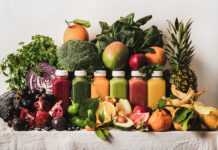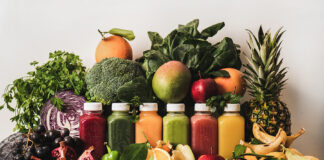
By Mark Christou, CBX
The organic market continues its decades-long growth trajectory via expansion into the mainstream, making organic and better-for-you foods and beverages across categories and stores more accessible than ever before.
Organic foods and beverages have become a household staple for many — 82% of consumers confirm that they purchase and use organic foods and beverages. Nearly half of Millennials use organic products weekly or more, and even some Baby Boomers (18%), who’ve been slow to adopt organic products, are using such products at least weekly.
Organic brands are becoming more affordable, and as big brands aggressively enter the space, there’s more competition in every category. Mainstream retailers are trying to capture consumers and growth from specialty stores that once owned this niche market. Retailers are also developing more affordable private label offerings that are overcoming the high-cost deterrent for mainstream consumers.
However, the expansion of organic has also fueled a paradox of choice wherein consumers are left to navigate an increasingly complex decision-making landscape around healthy and organic food options. That choice is not only fueled by like competitors in the category, but also by mainstream brands that own the shelves of traditional big box retailers.
Most retailers used to view organic shoppers as a small group of individuals who were considered more nature-conscious and earthy. But today, organic is no longer a secondary thought for consumers. Between increased desire for healthy food options, the growth of environmental concerns and social causes, and widened organic product availability, the consumer shift can no longer go ignored. Organic and better-for you is no longer a trend, but rather an expectation.
How organic and conventional consumers differ
So how can natural and organic package design account for the shift from a niche category based in a social movement to a mainstream marker of quality across food and beverage categories?
Firstly, winning this consumer in both conventional and organic channels starts with understanding the differences between consumer behavior, desires, beliefs, and habits.
The organic channel consumer enjoys spending more time in a store to explore, discover, and try new products. They’re more adventurous, health conscious, and less price sensitive and are willing to try out new brands and unique or elevated product offerings. The packaging design and ingredients matter to these consumers. These shoppers are often looking for unexpected and high-quality products and are happy to pay a premium for them. In short, they care about what the brand says about them as a consumer.
Conversely, consumers in the conventional channel are typically less curious, more skeptical, price sensitive, and more brand loyal. They often stick with familiar products and are less likely to spend time and money exploring new items. They enter a supermarket on a mission with a shorter window of time and a clearer idea of which mainstream brands they’ll buy and why.
Leading motivators of natural and organic product purchases, according to Mintel Natural and Organic Food Shopper (2022) data, are overall healthfulness (50%), followed by avoiding artificial ingredients (38%) and pesticides (35%), illustrating that consumer drive to purchase is predominantly for personal health reasons.
We believe that appealing to such contrasting consumers requires an even greater emphasis on a brand’s package design, which acts as a brand’s greatest salesperson.
How packaging design supports the shift to mass premium
A brand’s package design sells 24 hours a day, 365 days a year with no sleep. It’s the real-life MVP of the brand, period. The package needs to constantly and consistently tell the brand’s story efficiently and communicate its brand benefits clearly and disruptively. In doing so, the package design will open the door to new partnerships, drive velocity, and potentially even excite culture. More still, mastering package design is the primary means by which a brand can make the daring transition from natural and organic to conventional.
Of all the brands I’ve partnered with, Love Corn has been the epitome of a natural/organic to conventional crossover success story. Love Corn has blossomed into the one of the fastest growing snack brands in the U.K., with airline partnerships and distribution in over 10,000 stores across the natural and mass channels on this side of the pond. The unsung hero in that story was the captivating packaging design that led with a large approachable brand mark and bright colors that stand out on shelf among a sea of mainstream salty snacks. The front panel highlights key benefits like gluten-free and vegan, and imbues emotion tied back to the brand name. This strategy speaks to what we call “mass premium.”
Mass premium demands packaging design that’s simple enough for the mass market to pick up but premium enough to catch the natural and organic consumer’s attention. This means bold use of color, engaging and familiar language, clear communication hierarchy, clever product representation, and strong brand blocking, so the prominence of the brand isn’t lost amid the busy aisles.
Liquid Death and GoMacro have both captured market share of the mass premium market by leaning into similar strategies — big brand presence and eye-catching illustrations — to tell their brand story. Brands like Siete chips have done it through bold iconic graphics tying in heritage and strong lifestyle callouts such as paleo and vegan. The convergence of these brands is their commitment to designing for their premium base while making sure not to alienate their mass market target in the process.
Leaning into these branding and design principles has enabled brands to transition from small startup status to big brand status, with the financials to prove it.
It’s evident that everything from a brand’s logo to its choice of tone of voice plays a huge role in the transition. Studying the environment and understanding the category cues (both in organic and conventional) allows a brand to exploit and disrupt the status quo to draw the consumer in.
Whether it’s a box of cereal, a pack of cookies, or a soda can, attention to detail is a must to stand out. Crafting the visual and verbal message and playing with the aesthetic to disrupt the space allows consumers to quickly understand what the product is and why they should engage with it.
In short, be sure to consider the dynamics of where your brand will live in-store, understand what’s important to mainstream consumers as well as your true healthy loyalists, and tell a brand story that has purpose and emotional appeal — a true recipe for success in the “mass-premium” world.
 Mark Christou is a principal at CBX, an independent brand strategy and design agency based in NYC and Minneapolis. Before joining CBX, Mark was founder and creative partner of ROOK/NYC, Founder and Partner of R/Co Ventures, and Co-Founder of Love Corn, and Culture POP Soda.
Mark Christou is a principal at CBX, an independent brand strategy and design agency based in NYC and Minneapolis. Before joining CBX, Mark was founder and creative partner of ROOK/NYC, Founder and Partner of R/Co Ventures, and Co-Founder of Love Corn, and Culture POP Soda.









